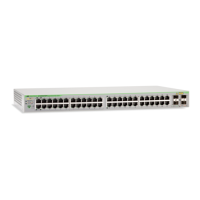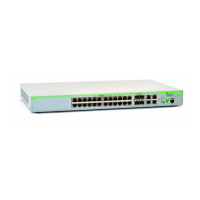Chapter 26: Policy-Based QoS Commands
462 Section IV: Security and Traffic Control
ip_add
Specifies an IP address in the format: nnn.nnn.nnn.nnn.
mask_len
Specifies a VLSM after the IP address. Separate the IP address
and VLSM with a slash(/).
tcpsport
Specifies the TCP source port of packets. The range is 0 to 65535.
The default setting is any.
tcpdport
Specifies the TCP destination port of packets. The range is 0 to
65535.The default setting is any.
udpsport
Specifies the UDP source port of packets. The range is 0 to 65535.
The default setting is any.
udpdport
Specifies the UDP destination port of packets. The range is 0 to
65535. The default setting is any.
tcpflags
Specifies the flag in the TCP header. The options are urg, ack,
psh, rst, syn, and fin. QoS filters a packet in which only the
specified flag in the TCP header is on. The default setting is any.
Description
Use this command to create a classifier. The classifier defines criteria in
order to filter traffic. Classifiers are assigned to a flow group.
Here are the guidelines for creating a flow group:
You cannot use the iptos and ipdscp parameters at the same time.
When the tcpsport and tcpdport parameters are specified, you
cannot use the udpsport and udpdport parameters.
When the iptos, ipdscp, ipprotocol, ipdaddr, or ipsaddr parameter
is specified, the protocol parameter is automatically set to ip.
Confirmation Command
“SHOW CLASSIFIER” on page 489
Example
The following command creates classifier 10:
Manager > create classifier=10 ipdaddr=192.168.10.0/24

